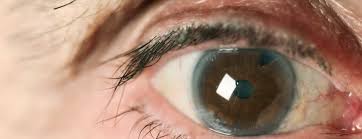
Breaking News
 Year-Over-Year Existing Home Sales Disappoint In November, Decline Most In 6 Months
Year-Over-Year Existing Home Sales Disappoint In November, Decline Most In 6 Months
 Loss Of Credibility: Yen Craters, Yields Surge After BOJ Hikes Rates To Highest Since 1999
Loss Of Credibility: Yen Craters, Yields Surge After BOJ Hikes Rates To Highest Since 1999
 DOJ Releases Epstein Files, And [REDACTED]
DOJ Releases Epstein Files, And [REDACTED]
 Putin Identifies The Main Issue Which Will Settle Ukraine War In Year-End Q&A
Putin Identifies The Main Issue Which Will Settle Ukraine War In Year-End Q&A
Top Tech News
 This tiny dev board is packed with features for ambitious makers
This tiny dev board is packed with features for ambitious makers
 Scientists Discover Gel to Regrow Tooth Enamel
Scientists Discover Gel to Regrow Tooth Enamel
 Vitamin C and Dandelion Root Killing Cancer Cells -- as Former CDC Director Calls for COVID-19...
Vitamin C and Dandelion Root Killing Cancer Cells -- as Former CDC Director Calls for COVID-19...
 Galactic Brain: US firm plans space-based data centers, power grid to challenge China
Galactic Brain: US firm plans space-based data centers, power grid to challenge China
 A microbial cleanup for glyphosate just earned a patent. Here's why that matters
A microbial cleanup for glyphosate just earned a patent. Here's why that matters
 Japan Breaks Internet Speed Record with 5 Million Times Faster Data Transfer
Japan Breaks Internet Speed Record with 5 Million Times Faster Data Transfer
 Advanced Propulsion Resources Part 1 of 2
Advanced Propulsion Resources Part 1 of 2
 PulsarFusion a forward-thinking UK aerospace company, is pushing the boundaries of space travel...
PulsarFusion a forward-thinking UK aerospace company, is pushing the boundaries of space travel...
 Dinky little laser box throws big-screen entertainment from inches away
Dinky little laser box throws big-screen entertainment from inches away
 'World's first' sodium-ion flashlight shines bright even at -40 ºF
'World's first' sodium-ion flashlight shines bright even at -40 ºF
Holistic 20-minute daily eye care routine emerges as shield against glaucoma, cataracts...

As prolonged screen time fuels a global rise in eye strain and chronic conditions like glaucoma and cataracts, a holistic 20-minute daily eye care routine is gaining traction as a proactive defense. Combining time-tested techniques from practitioners like Dr. William Bates, who pioneered palming in the early 20th century, with acupressure traditions from Traditional Chinese Medicine (TCM), the protocol addresses both modern and age-old eye health challenges. Designed for at-home use, the routine — culminating in eight targeted exercises — aims to balance muscle relaxation, blood circulation and nerve stimulation, offering a tangible response to vision threats exacerbated by technology.
Historical and scientific foundations of holistic eye care
At the heart of the routine lies Dr. William Bates' palming technique, developed over a century ago to combat tension-induced vision issues. This method, emphasizing deep relaxation, aligns with emerging evidence that eye strain stems not just from external stressors but also from internal states like anxiety. Meanwhile, TCM's acupressure focuses on meridian pathways, particularly around the eyes, to enhance qi (energy) and blood flow. For instance, the Gallbladder 20 (GB20) acupoint, massaged to relieve dryness and pressure, reflects ancient anatomical knowledge of blood vessel pathways. Modern studies support these practices: stimulating GB20, located at the base of the skull, improves vertebral artery circulation, which nourishes ocular nerve tissues.
The fusion of these traditions with contemporary research underscores the routine's versatility. Exercises such as monocular focus training target the ciliary muscles, the same structures responding to digital screens' constant focus shifts. "This mix approaches eye care systematically," explained Dr. Mei Lin, an integrative optometrist in Shanghai, "bridging herbal remedies like bilberry with targeted movements that replicate the dynamic nature of sight."
The 8-step protocol: Exercises explained
The routine begins with stimulating GB20 to reduce blood pressure obstruction and progresses to techniques tailored to specific needs:
Scalp combing: Enhances Du meridian energy flow, promoting alertness and stimulation of Bladder and Gallbladder meridians.
Monocular focus: Strengthens ciliary muscles to combat myopia, using small text to mimic the eye's natural contraction-expansion cycle.
Eye rotations (closed): Relaxes the six extrinsic eye muscles post-screen use, easing stiffness from fixed postures.
Eye squeeze and release: Lubricates dry eyes by activating tear glands, critical for glaucoma patients managing intraocular pressure.
Socket acupressure: The "Eye Bagua" zone's stimulation aids detoxification and circulation, reducing deep orbital tension.



